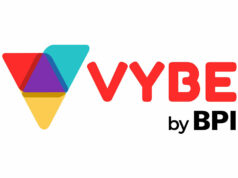My Asian Institute of Management-Master in Business Management alumni class has a very active Viber group and recently our exchange revolved around the debate on whether new management theory has been discovered. One view says that management theory hasn’t really changed in the past 50 years, except that framing of the theory has progressed in the elusive search for the winning management formula. This has given birth to an industry of best selling books written by experts claiming to have discovered the immutable laws of management and leadership.
But despite all of these professed solutions, organizational problems persist because at its core, most executives and managers find it difficult to adapt to change. We are hard-wired individuals and we rely too much on the patterns we personally experienced in our own path to success. Once managers move up in the organization, they think that whatever helped them in the process will continue to work for everyone else.
Geoffrey James, writing for Inc.com, wrote this piece entitled, “Elon Musk’s management advice is so brilliant that I threw away 37 business books.” In 11 short rules, Musk laid out what we need to know about management. Are these ideas truly worth throwing away business books? Put another way, is there a real short cut to learning about management? Here’s James’ edited version:
1. No large meetings unless they’re of value to the entire audience. Keep them short.
2. Don’t have frequent meetings unless the matter is truly urgent. Resolve it; stop meeting.
3. If you are not adding value to a meeting, walk out or drop off the call.
4. Don’t use acronyms and nonsense words for objects, software, or processes.
5. Avoid any terms that required explanation, because they inhibit communication.
6. Communicate directly with individuals rather than through a chain of command.
7. Any manager enforcing chain-of-command communication will be fired.
8. Don’t follow any “company rule” that doesn’t make common sense.
9. Ideas that increase productivity or happiness are always welcome.
10. Contractors who can’t find an employee to vouch for them will be fired.
11. Never do anything that would make a great Dilbert cartoon.
Management boils down to controlling resources and people and orchestrating both towards a desired mission-vision. Is it enough to pick up management concepts from a list like Musk’s? As one classmate noted, taking a full time MBM class the AIM case method way exposes the student to myriad management challenges. The daily cases during our AIM days allowed us to be exposed to hundreds of real life management problems. The virtual experience was definitely less costly especially by way of possible mistakes. Regular exposure to decision making in different context provides superior lessons compared to a list, even if the list is arguably correct. As our professor said, management training is about changing behavior and this takes time.
While management theory hasn’t changed much for traditional companies, for technology companies the theory and practice have drastically changed. The key word is agile. They do not believe in long term planning. They do not believe in very detailed feasibility studies. They want to launch products even before its fully ready. They do not want organizational charts. They mostly depend on learning and adapting to the environment and competition. They operate in a way they can make changes very quickly in hours, days or weeks instead of months and years.
The concept came from software developers and adopted by the technology companies. It appears to be the “flavor of the month” in management circles and is compatible with the working style of millennials. In an agile manifesto, software companies value individuals and interactions over processes and tools, working software over comprehensive documentation, customer collaboration over contract negotiation and responding to change over following a plan. Clearly, it runs counter to many of the things we learned decades ago in management school.
Even in management structure and organization design, there is the chicken versus lobster concept. Chicken or other animals with bones are very structured. The lobster on the other hand has its shell but no bone structure.
Management theories and specific concepts favored in the business community may change from time to time. During our earlier years, it was management by objectives, total quality management, management by walking around, management for results, situational leadership and so on. One thing remains certain though. In any management approach, employee engagement is key. Because at the end of the day, managers work with people and it will require team effort, not just individual talent, to deliver on the organization’s potential.
I am indebted to Prof. Junbo Borromeo and AIM classmates Greg Domingo, Art Falco, Eddie Yap, Minda Garcia, Ramon Lim, Philip Huang, Vic Bocaling and others whose ideas and thoughts I simply put together for this column.
Benel D. Lagua is Executive Vice President at the Development Bank of the Philippines. He is an active FINEX member and a long time advocate of risk-based lending for SMEs. The views expressed herein are his own and does not necessarily reflect the opinion of his office as well as FINEX.)



